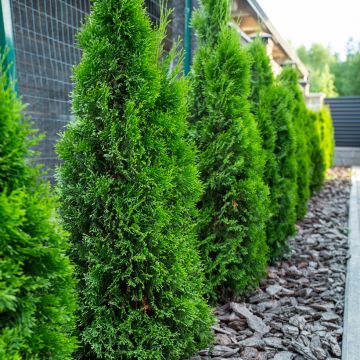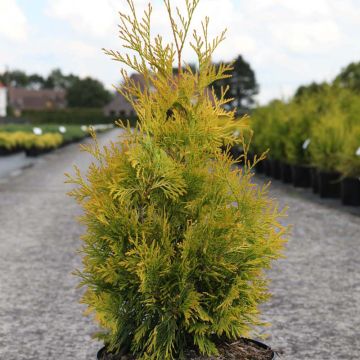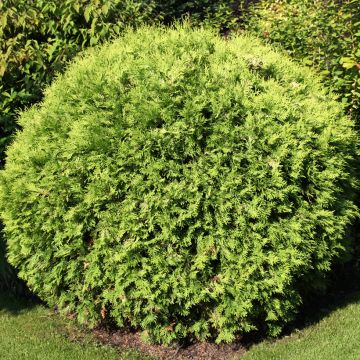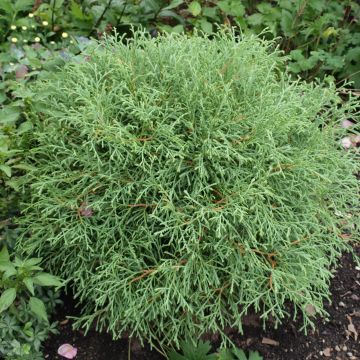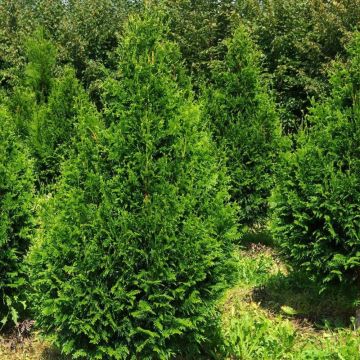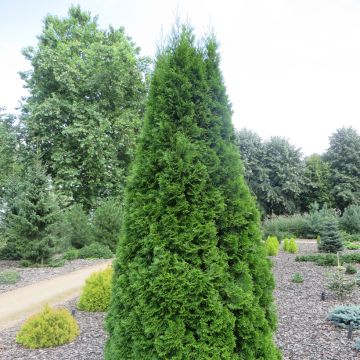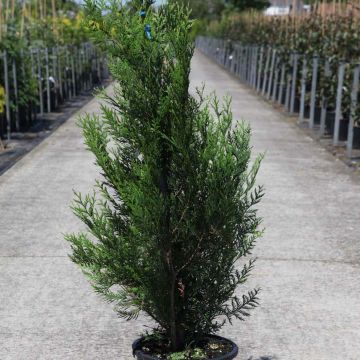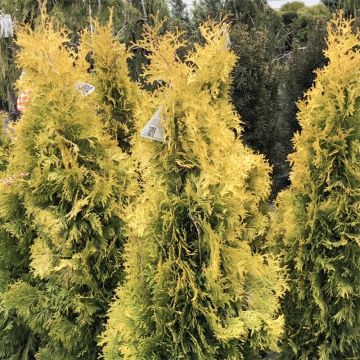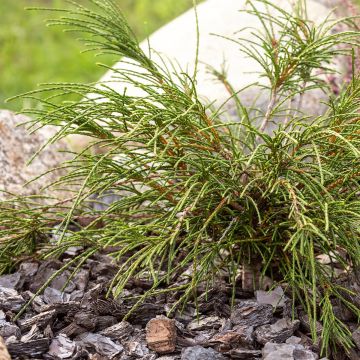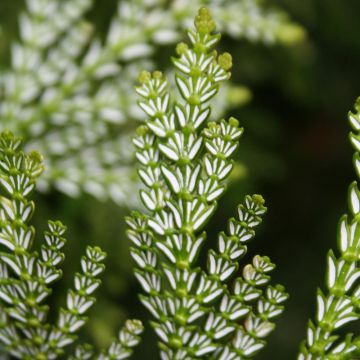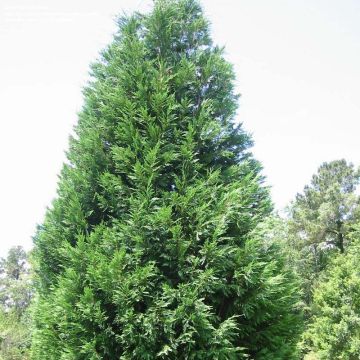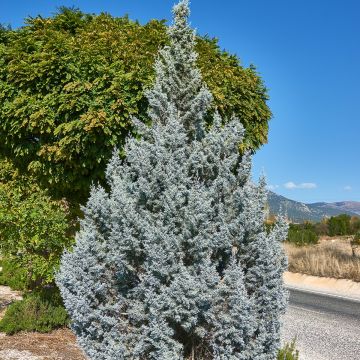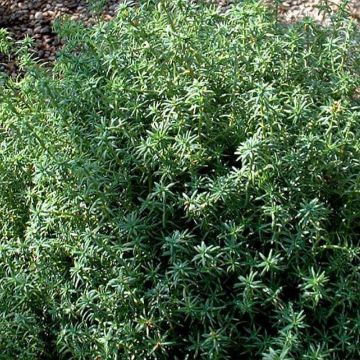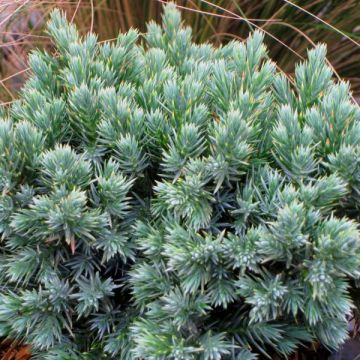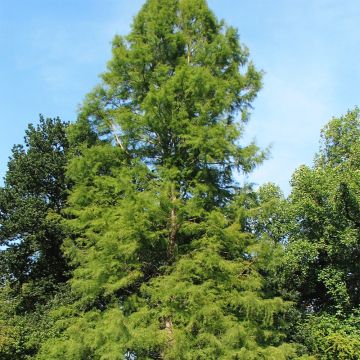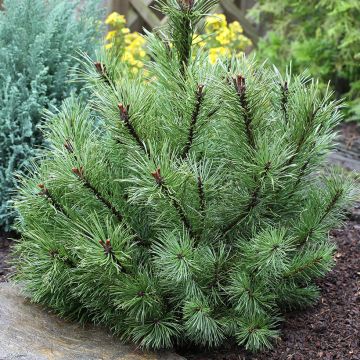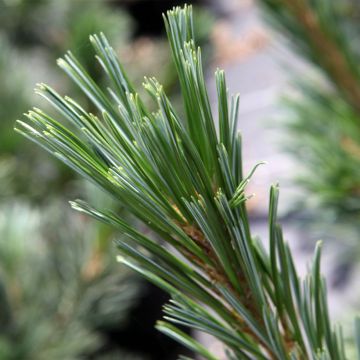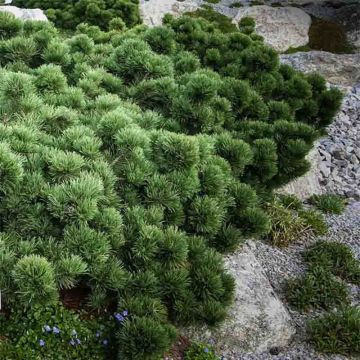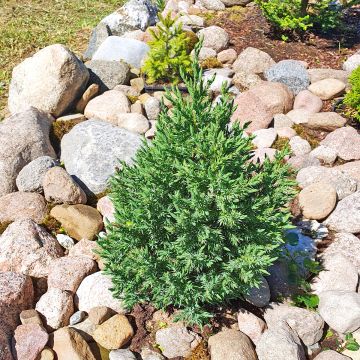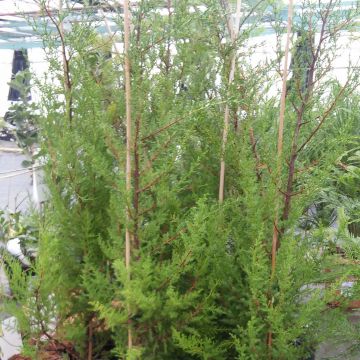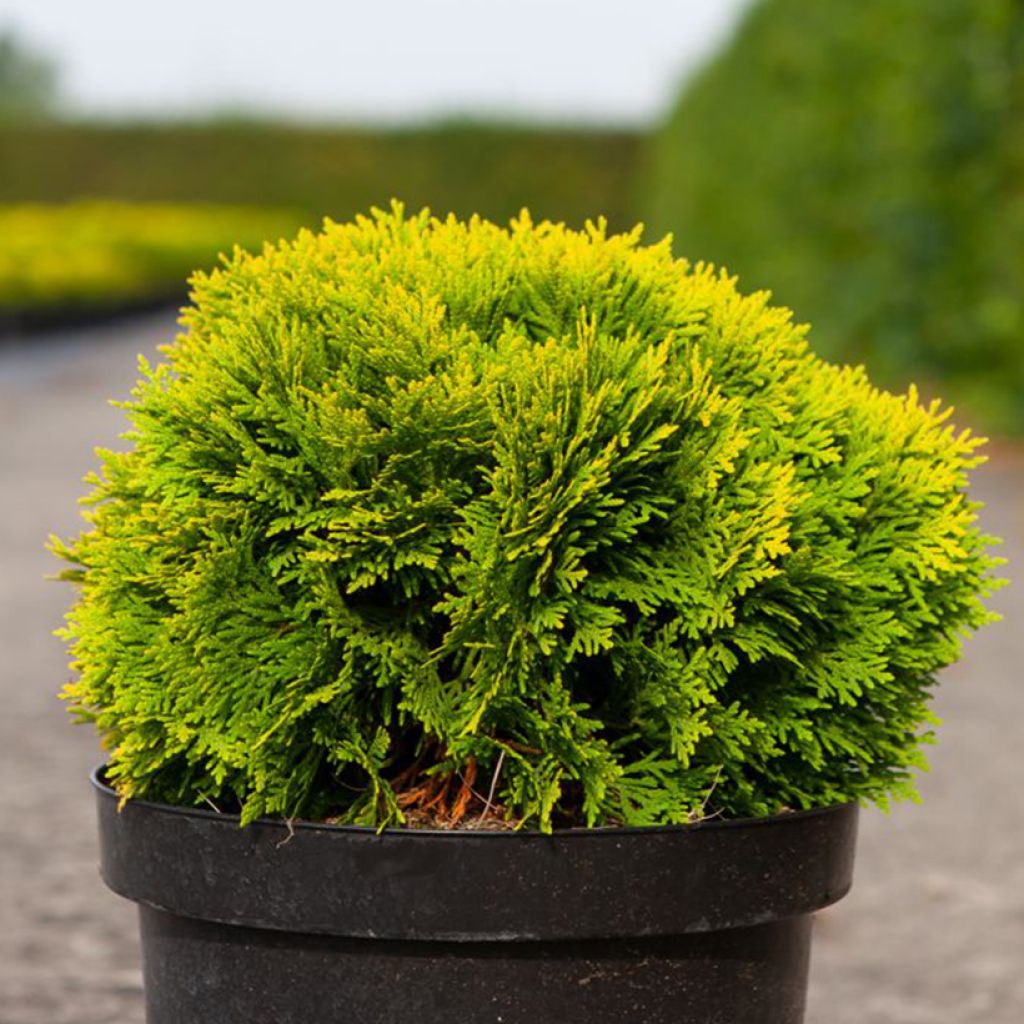

Thuja occidentalis Mirjam - Canadian Arborvitae
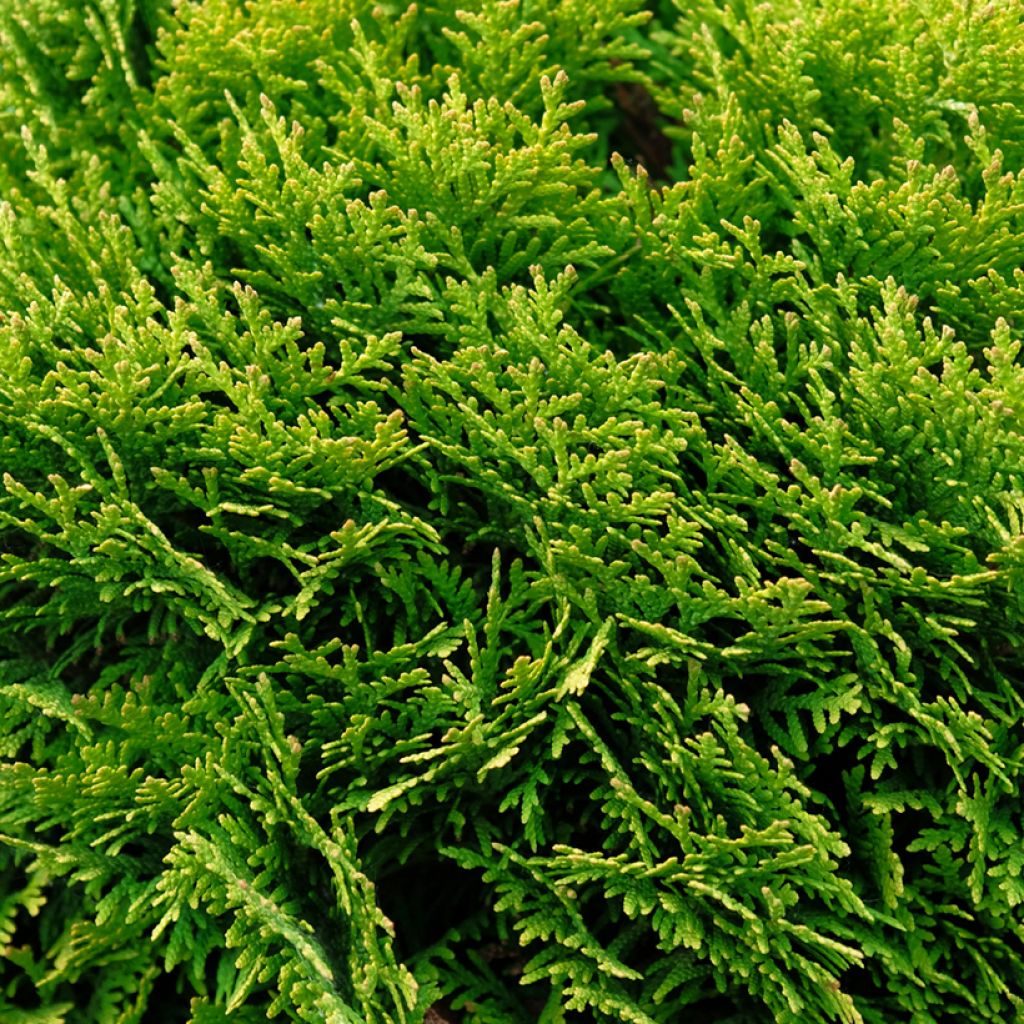

Thuja occidentalis Mirjam - Canadian Arborvitae
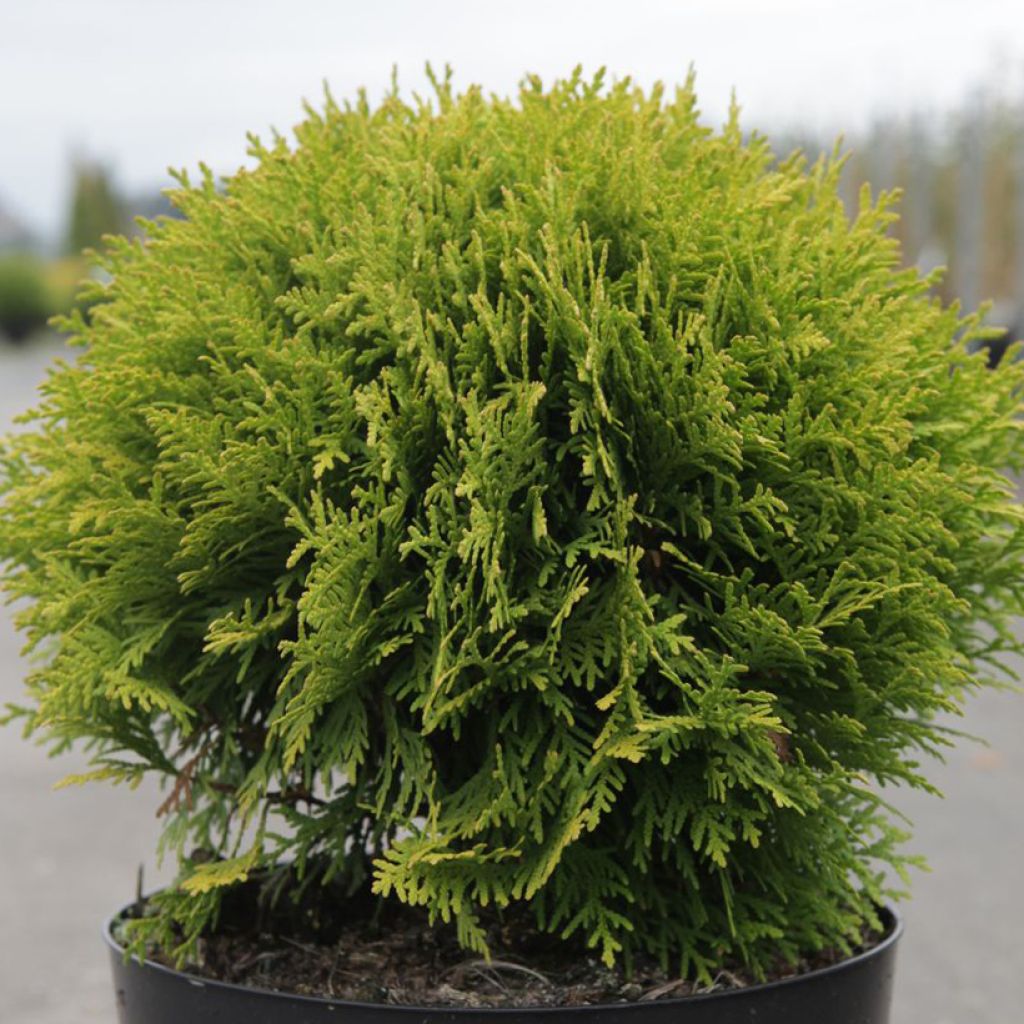

Thuja occidentalis Mirjam - Canadian Arborvitae
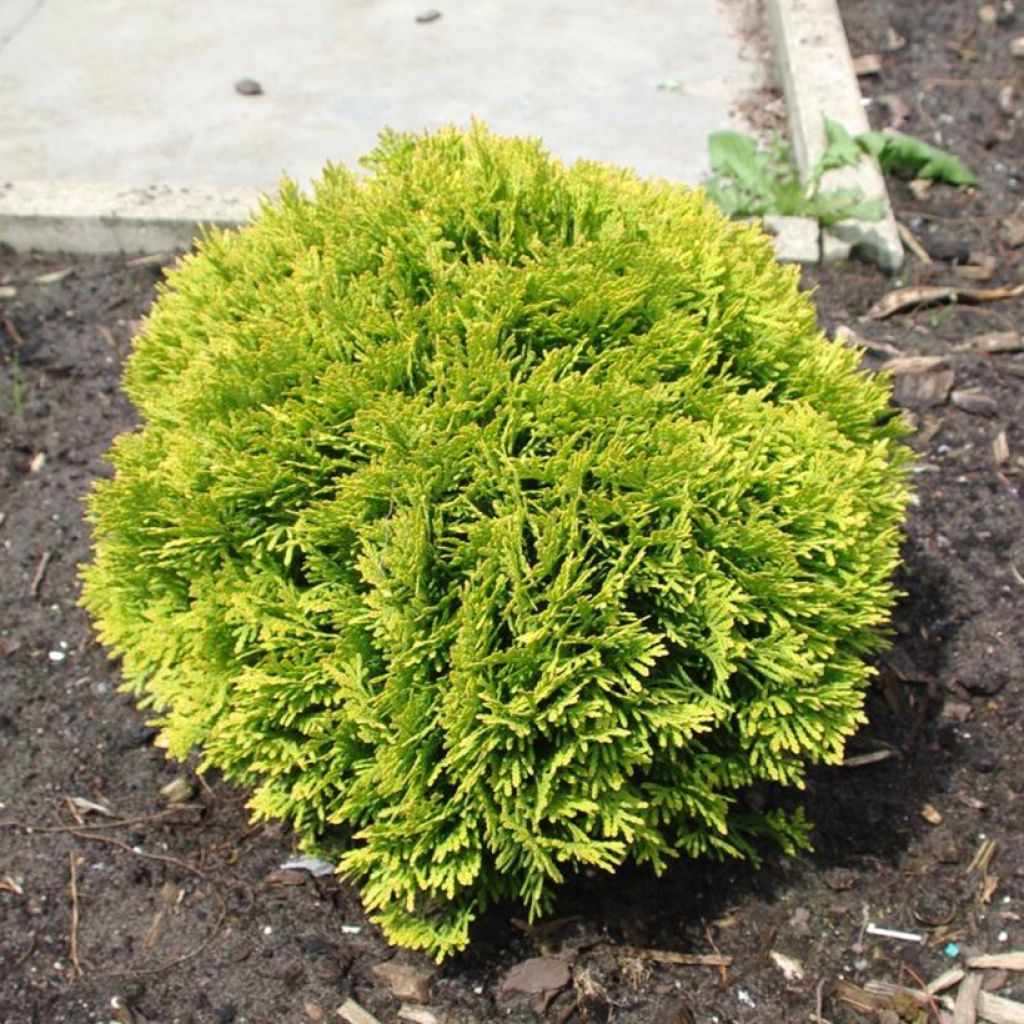

Thuja occidentalis Mirjam - Canadian Arborvitae
Thuja occidentalis Mirjam - Canadian Arborvitae
Thuja occidentalis Mirjam
Eastern White Cedar, Northern White Cedar, American Arborvitae, Eastern Arborvitae
This item cannot be shipped to the selected country
Delivery charge from €5.90
Delivery charge from €5.90
More information
Delivery charge from €5.90
Delivery charge from €5.90
More information
Schedule delivery date,
and select date in basket
This plant carries a 24 months recovery warranty
More information
We guarantee the quality of our plants for a full growing cycle, and will replace at our expense any plant that fails to recover under normal climatic and planting conditions.
From €5.90 for pickup delivery and €6.90 for home delivery
Express home delivery from €8.90.
From €5.90 for pickup delivery and €6.90 for home delivery
Express home delivery from €8.90.
Does this plant fit my garden?
Set up your Plantfit profile →
Description
The Thuja occidentalis 'Mirjam' is a low-growing, highly graphic conifer that naturally forms a beautiful rounded and compact mass, resembling a topiary. Its fairly fine foliage is very structured, with young golden-green shoots that turn bronze in winter, on flattened branches. Its slow growth and small size allow for many uses, in a rockery, as a standalone plant, in a border with other bushes, or even in a large pot near an entrance. It is also a hardy and undemanding conifer.
The Thuja occidentalis, also known as the Eastern White Cedar or Northern White Cedar, is sometimes referred to as the Eastern Arborvitae or Swamp Cedar. It is an evergreen conifer in the Cupressaceae family native to northeastern North America. It is distributed in a wide geographic area that perfectly reflects the adaptability of its living conditions, from swamps to cliffs, hostile environments that discourage many other competing species. In the wild, it reaches a height of 15 to 20 m (49 ft 2 in to 65 ft 7 in), with a beautiful conical habit and a trunk covered with a decorative, reddish-brown and exfoliating bark. It is a very hardy species, well adapted to temperate climates and poor, wet, or occasionally dry soils. Its nearly rot-resistant, lightweight, fragrant, and easily flammable wood is used for many purposes. It has given rise to more than 300 cultivars that have been selected for their ornamental qualities.
The 'Mirjam' variety won a bronze medal at the professional Plantarium event in 2008, in Boskoop, a major center for Dutch and European nurseries. Indeed, it is a small conifer with many advantages, from its very good hardiness (-25°C) to its particularly decorative appearance. With slow growth, it forms a perfect ball about 70 cm (27.6 in) in diameter, reaching a maximum height of 1 m (3 ft 4 in) when mature. Its highly graphic habit is enhanced by the emergence of young shoots, which display a beautiful bright golden-green colour to brighten up spring. Then, as the cold approaches, in autumn and winter, the foliage takes on a bronze colour that is quite striking. Thus, it is decorative in all seasons, with its fine and structured foliage with changing colours, making it an ideal subject for rockeries.
It thrives in full sun, prefers a rich, neutral soil (adapts to slightly acidic or alkaline soils), not too dry in summer.
The 'Mirjam' Western Red Cedar can be planted in a container to enhance a terrace. In the garden, its graphic habit will be well highlighted in a contemporary space, where the simplicity of forms prevails over the exuberance of blooms. Its light foliage will then blend well with darker or bluish masses, such as the one formed by the Juniperus squamata 'Blue Star'. A stronger contrast can easily be achieved with a small bush like the Berberis thunbergii Rosy Rocket, which, with its upright habit and small red, pink, and white leaves turning purple in autumn, creates a permanent spectacle alongside our miniature Thuja.
Planted in a bed with other plants, its somewhat compact and massive appearance can be lightened with fine grasses swaying in the wind or Gauras with charming little flowers hovering over the narrow foliage.
Thuja occidentalis Mirjam - Canadian Arborvitae in pictures
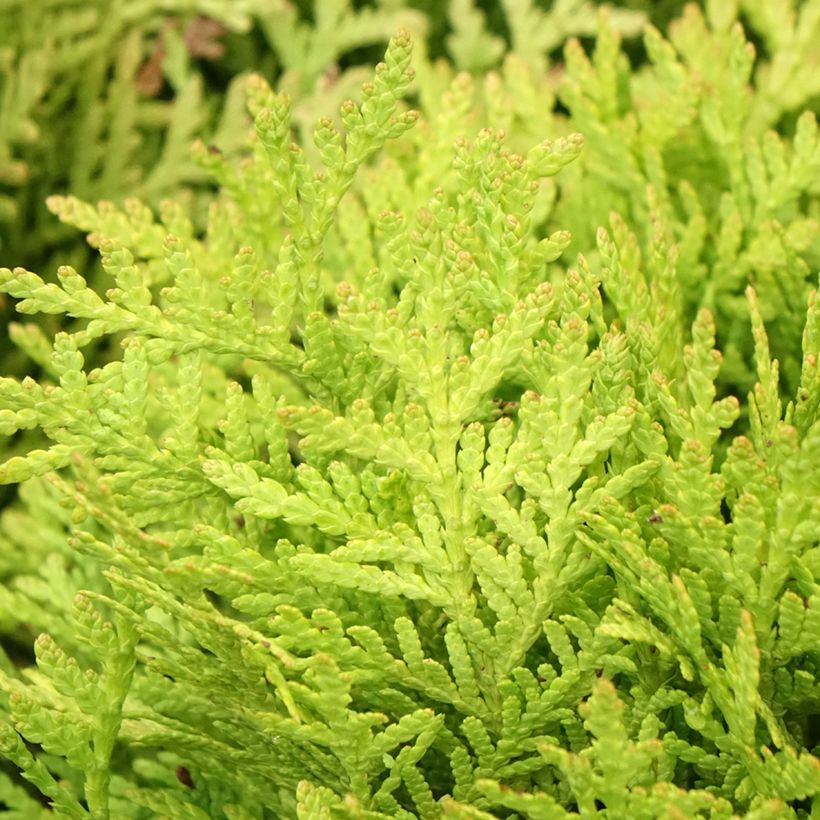

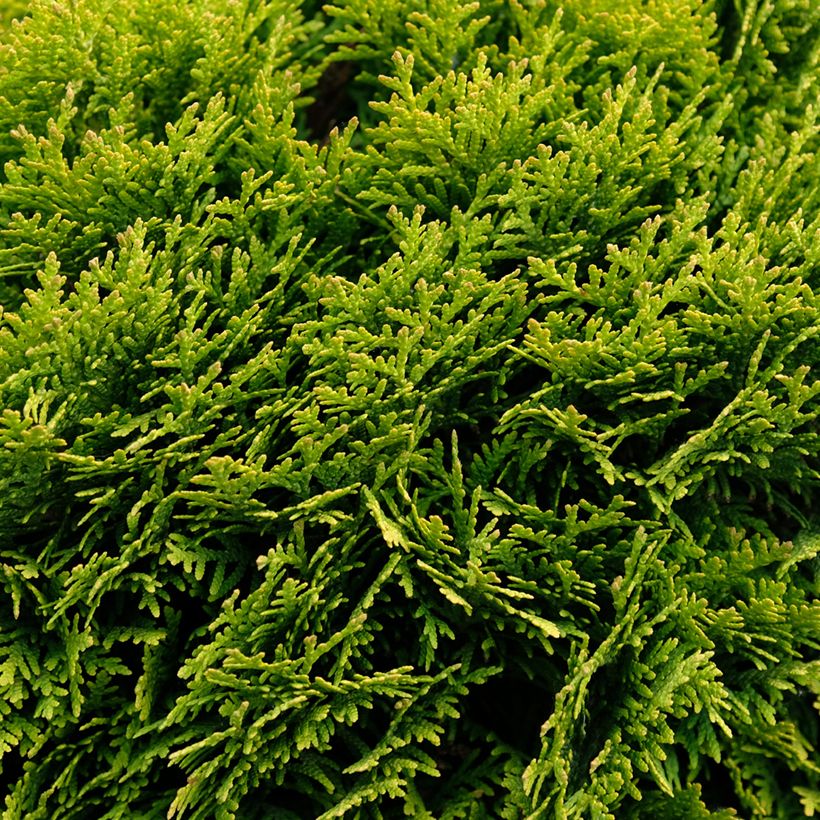

Plant habit
Foliage
Botanical data
Thuja
occidentalis
Mirjam
Cupressaceae
Eastern White Cedar, Northern White Cedar, American Arborvitae, Eastern Arborvitae
Cultivar or hybrid
Other Thuya - Thuja
Planting and care
The Thuja occidentalis 'Mirjam' can be planted from September to November and from February to June in deep, ordinary, but loose and light soil, neutral or even slightly calcareous, but not too dry in summer. It only fears scorching temperatures and prolonged drought, although it tolerates occasional drought once well established. However, it requires a sunny exposure to thrive.
Soak the root balls well before planting. Optionally, add organic amendment during planting and water generously in the first years, especially during prolonged drought. In very poor soil, you can apply a special conifer fertilizer and weed the soil in summer every year, in April. This hardy conifer (up to -25 °C at least) does not require pruning.
Planting period
Intended location
Care
This item has not been reviewed yet - be the first to leave a review about it.
Conifers
Haven't found what you were looking for?
Hardiness is the lowest winter temperature a plant can endure without suffering serious damage or even dying. However, hardiness is affected by location (a sheltered area, such as a patio), protection (winter cover) and soil type (hardiness is improved by well-drained soil).

Photo Sharing Terms & Conditions
In order to encourage gardeners to interact and share their experiences, Promesse de fleurs offers various media enabling content to be uploaded onto its Site - in particular via the ‘Photo sharing’ module.
The User agrees to refrain from:
- Posting any content that is illegal, prejudicial, insulting, racist, inciteful to hatred, revisionist, contrary to public decency, that infringes on privacy or on the privacy rights of third parties, in particular the publicity rights of persons and goods, intellectual property rights, or the right to privacy.
- Submitting content on behalf of a third party;
- Impersonate the identity of a third party and/or publish any personal information about a third party;
In general, the User undertakes to refrain from any unethical behaviour.
All Content (in particular text, comments, files, images, photos, videos, creative works, etc.), which may be subject to property or intellectual property rights, image or other private rights, shall remain the property of the User, subject to the limited rights granted by the terms of the licence granted by Promesse de fleurs as stated below. Users are at liberty to publish or not to publish such Content on the Site, notably via the ‘Photo Sharing’ facility, and accept that this Content shall be made public and freely accessible, notably on the Internet.
Users further acknowledge, undertake to have ,and guarantee that they hold all necessary rights and permissions to publish such material on the Site, in particular with regard to the legislation in force pertaining to any privacy, property, intellectual property, image, or contractual rights, or rights of any other nature. By publishing such Content on the Site, Users acknowledge accepting full liability as publishers of the Content within the meaning of the law, and grant Promesse de fleurs, free of charge, an inclusive, worldwide licence for the said Content for the entire duration of its publication, including all reproduction, representation, up/downloading, displaying, performing, transmission, and storage rights.
Users also grant permission for their name to be linked to the Content and accept that this link may not always be made available.
By engaging in posting material, Users consent to their Content becoming automatically accessible on the Internet, in particular on other sites and/or blogs and/or web pages of the Promesse de fleurs site, including in particular social pages and the Promesse de fleurs catalogue.
Users may secure the removal of entrusted content free of charge by issuing a simple request via our contact form.

































